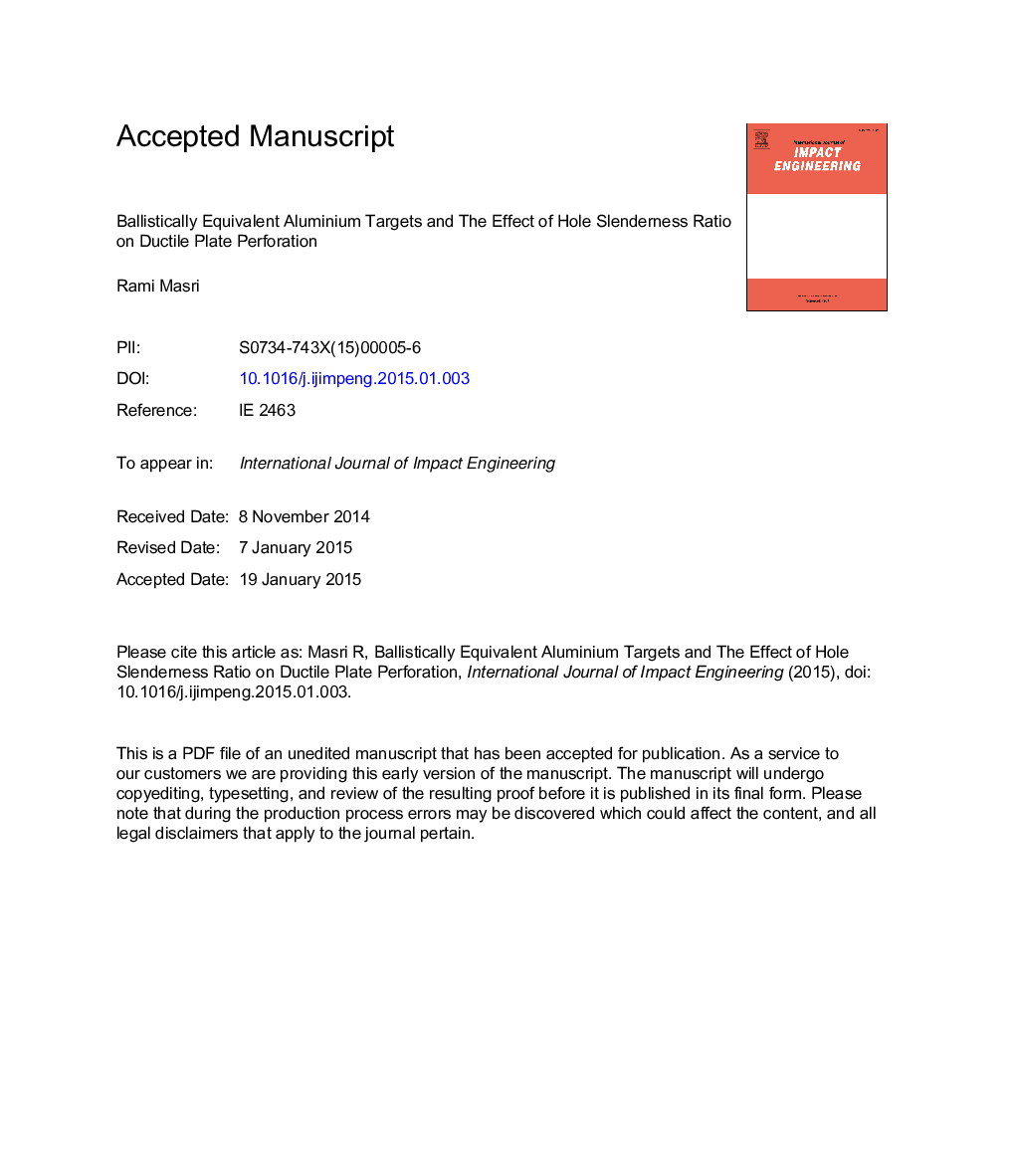| Article ID | Journal | Published Year | Pages | File Type |
|---|---|---|---|---|
| 7173148 | International Journal of Impact Engineering | 2015 | 54 Pages |
Abstract
The concept of ballistically equivalent metals for ductile plate perforation has been defined and demonstrated for five aluminium alloys. Heuristic derivation of a semi-empirical relation between specific cavitation energy sc and hole slenderness ratio h/D (the ratio between plate thickness h and projectile nose base diameter D which is also known as the normalized plate thickness) has exposed a logarithmic dependence which is verified by experimental data. A closed-form logarithmic expression for sc which takes into account the h/D effect has led to a closed-form formula for the ballistic limit. The expression for sc is based on the spherical cavitation yield stress YcS which serves as a scaling yield stress for strain-hardening (softening) response. It is found that ballistically equivalent metals should have practically the same values of YcS and elastic modulus. The perforation of aluminium targets by 7.62Â mm APM2 bullets is discussed and vast amount of experimental data is used to validate the particular ballistic limit formula. Application of the closed-form model is also demonstrated with connection to the more general concept of ballistically equivalent targets. The h/D effect on perforation of multilayered targets is examined and it is found that for ductile plate perforation the ballistic limit of a monolithic target is higher than the ballistic limit of any combination of its air-gapped parts. Under the constraint of n air-gapped protective layers with total thickness h the minimum ballistic limit is obtained for n identical layers.
Keywords
Related Topics
Physical Sciences and Engineering
Engineering
Mechanical Engineering
Authors
Rami Masri,
